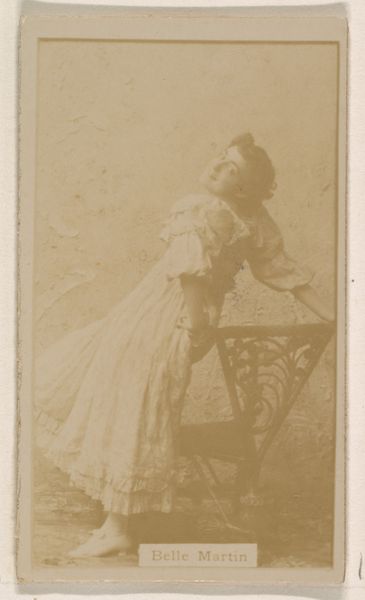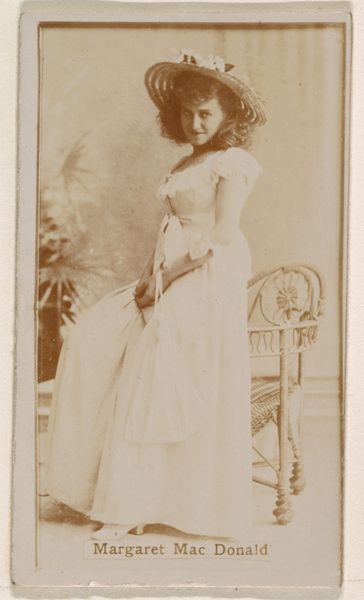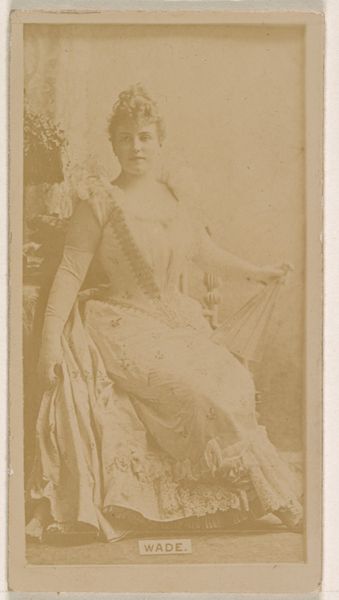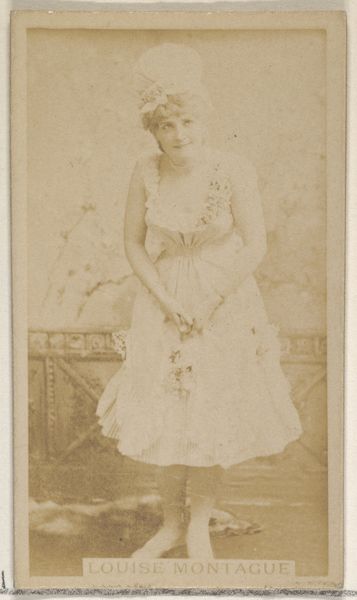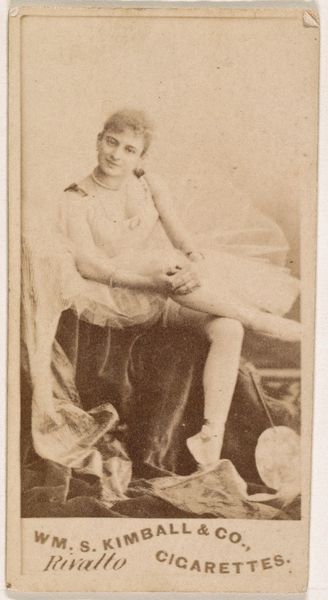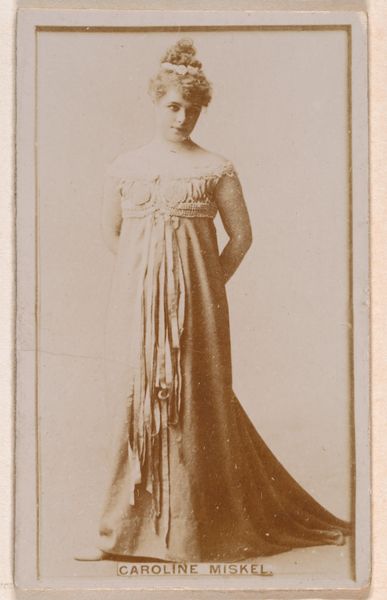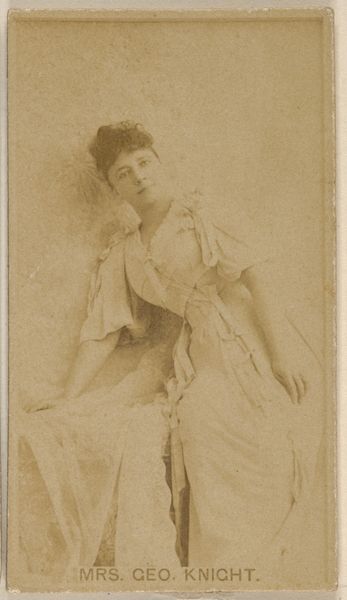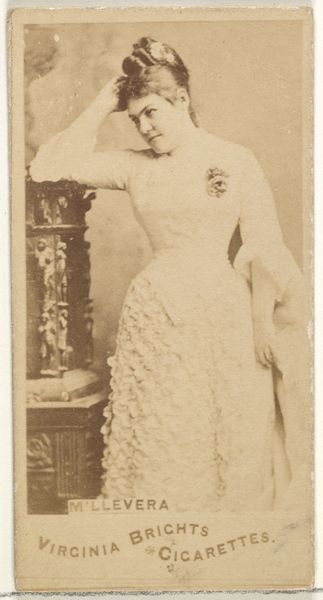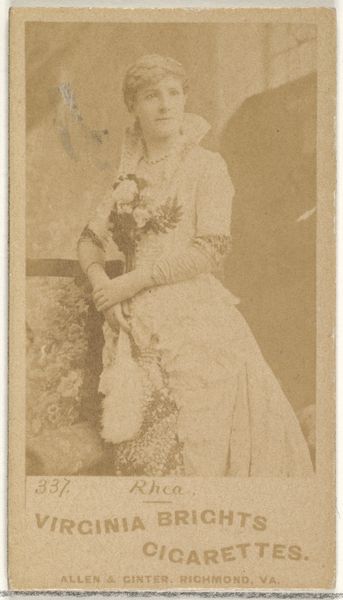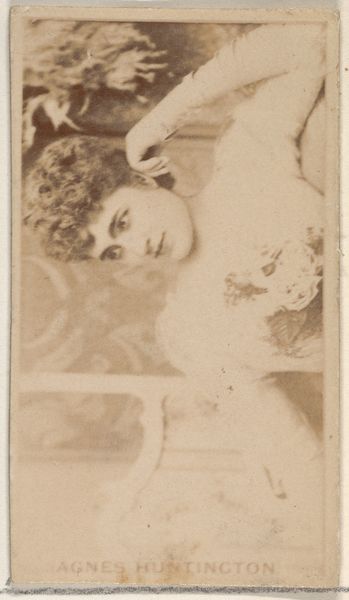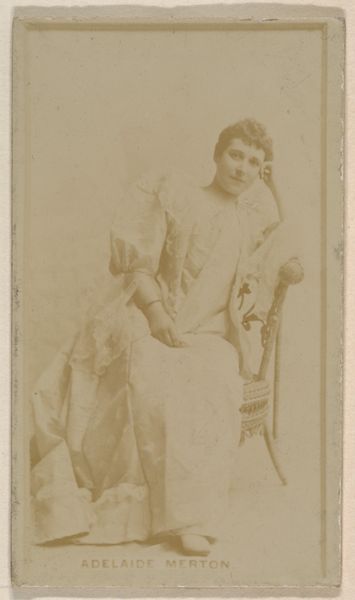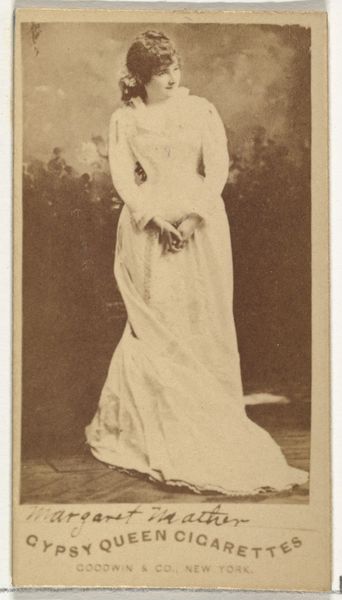
photography
#
portrait
#
photography
#
history-painting
Dimensions: height 101 mm, width 64 mm
Copyright: Rijks Museum: Open Domain
Editor: This is an albumen print from 1897 by Heinrich Wilhelm Wollrabe, titled "Portrait of Princess Wilhelmina." The image has a formal, staged quality, doesn't it? What significance do you see in it? Curator: It's striking how Wilhelmina is positioned—young yet burdened by expectation. Consider the weight of that ermine stole draped over her shoulder, visually representing the heavy mantle of leadership she would soon inherit. Photography, then as now, became a tool of cultural memory. What symbols of power do you notice? Editor: Definitely the tiara. And even her dress has a sort of formality, despite her youth. What does her gaze signify to you? Curator: It’s an interesting combination of youthful innocence and royal responsibility. Look closer – even the slightly blurred background and the studio props around her contribute to the atmosphere of cultivated regality. There’s a conscious construction of identity taking place here, using familiar visual cues for "royalty". We, as viewers, understand the narrative being presented, even without explicit labels. Editor: So the photo acts as more than just a portrait; it tells a constructed story about her future role. Curator: Precisely. And what does that constructed image communicate to the Dutch people at the time and to us now, about power and legacy? It’s less about capturing a likeness and more about transmitting carefully chosen cultural messages across generations. Do you see any inherent contradictions in how she is posed, considering her age? Editor: I see what you mean! The regal bearing contrasts with what feels like a youthful presence. Thanks, that's fascinating. I didn’t appreciate all the visual layers at first. Curator: Indeed, by looking for the contradictions we can gain more understanding and new meanings emerge.
Comments
No comments
Be the first to comment and join the conversation on the ultimate creative platform.
